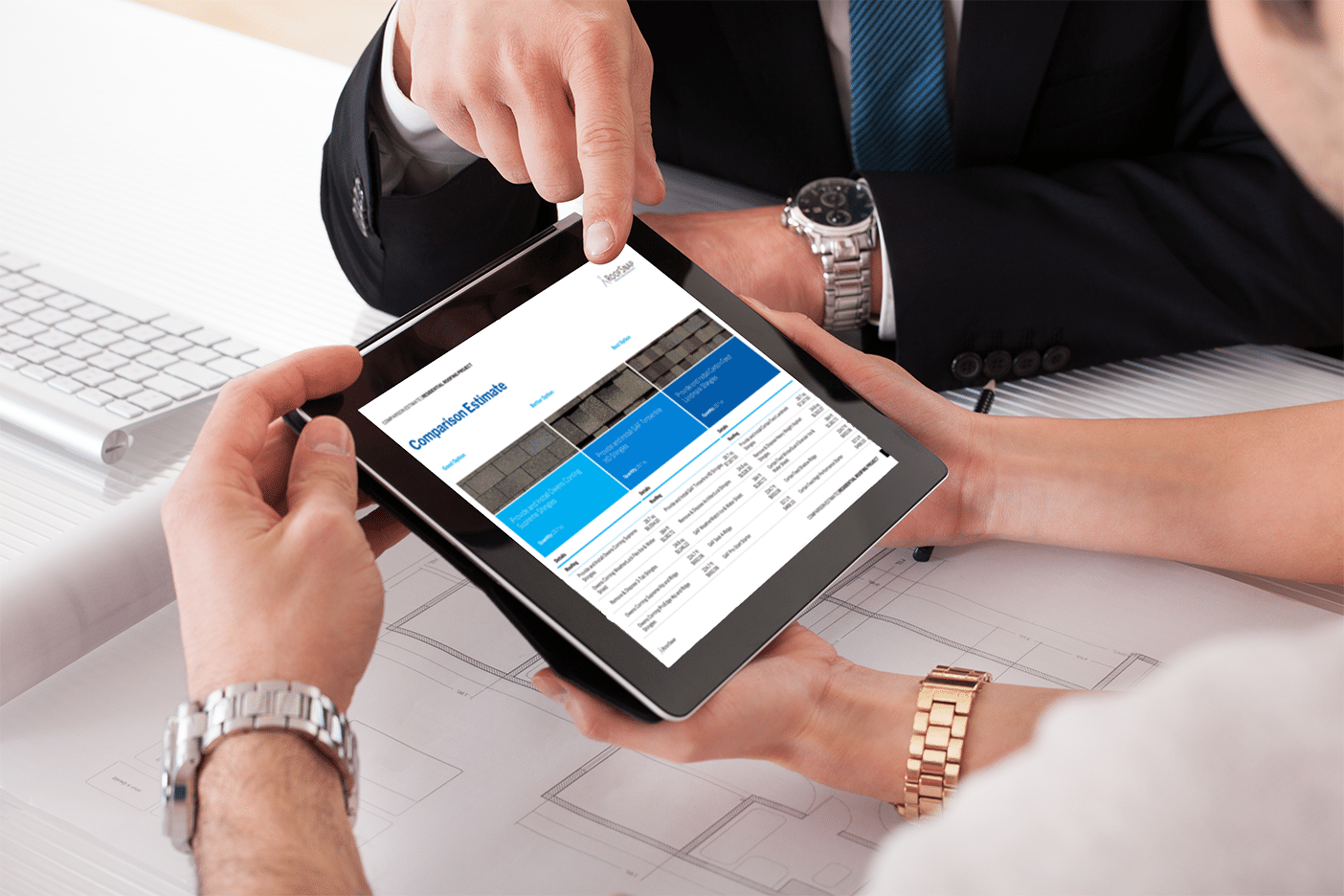Roofing can be a slim-margin business. If you’re just starting out and attempting to build a reputation in your market, you may be tempted to lower your prices to stay under the competition. While that’s an understandable strategy, it’s likely going to hinder the growth of your business. Think about it: one job with unforeseen costs going over-budget and you’re suddenly underwater! It’s better for you and your business to offer estimates that are profitable and fair to the homeowner and your business.
You can make your roofing estimates more profitable with 3 simple strategies:
- Offering Multiple Options
- Managing Price Sensitivity
- Building Markups into Your Materials
We’ll dig deeper into each of these topics in this week’s blog.

Offering Multiple Options
One of the easiest ways to increase the profitability of your estimates is to simply offer your customers choices in their roof replacement. Too many contractors still offer only one estimate option to their customers, when they could be presenting a Good, Better, Best-Style estimate and see greater benefits.

As we’ve discussed in our blog before, offering homeowners a 3-tiered estimate, in the Good, Better, Best style, guides your customers away from considering only the lowest bid. Instead, they’ll be comparing the value your options represent and choosing which option fits their needs best. Even if only one out of every ten homeowners chooses a higher-priced, higher-margin estimate, you’ll have increased your revenue by just putting the offer on the table.
Managing Price Sensitivity
If you want your customers to spend more with your business, you’ll need to manage their price sensitivity. Price sensitivity is used in economics to define the “elasticity of demand” around a good or service. Here we’re using it to describe a homeowner’s willingness to move forward with your estimate.
A consumer’s price sensitivity is impacted by a number of factors, but you can effectively manage it in a couple of ways. As we discussed earlier, using a Good, Better, Best-style estimate is a good way to set an “anchor price” with your customer and allow them to compare that price with other options so they can make the purchasing decision they are comfortable with.
You can help build the value of your estimate in the eyes of the homeowner by calling out the labor and materials that are included in your scope of work. When using an estimation platform like RoofSnap’s, you can list out labor items like “tear-off of existing shingles” and “installation of new shingles.” If your customer understands the amount of work going into their roof, they’re more inclined to pick a higher value option.
Building Markups into Your Materials
Lastly, if you’re trying to reach a certain profit margin with your estimates, it’s a best practice to mark up your inventory to meet that margin on every job. This may seem like a no-brainer, but too often sales teams are given a lot of freedom in the final price of a job and room to negotiate with homeowners. And while RoofSnap does provide your team with tools for offering discounts and deals to customers, using these features or negotiating tactics shouldn’t get in the way of your profit goals.
RoofSnap has a robust estimation platform that not only lets you customize your product list and pricing, but allows you to configure both the labor and material cost of every item. You can also apply a markup factor to hit your desired profit margin on every item. If you build your estimates from a profitable product-list, your estimates will always be in line with your profit needs.

We hope this short list has given you some strategies to help make your roofing estimates more profitable. And while you can accomplish any of them on your own, RoofSnap’s software makes it easy to apply all three to your business. If you’d like to see our software in action, you can sign up for a free trial today!
Thanks for reading and as always,
Happy Snapping!
(Need more general estimating information? Check out our Pricing a Roofing Job post.)



